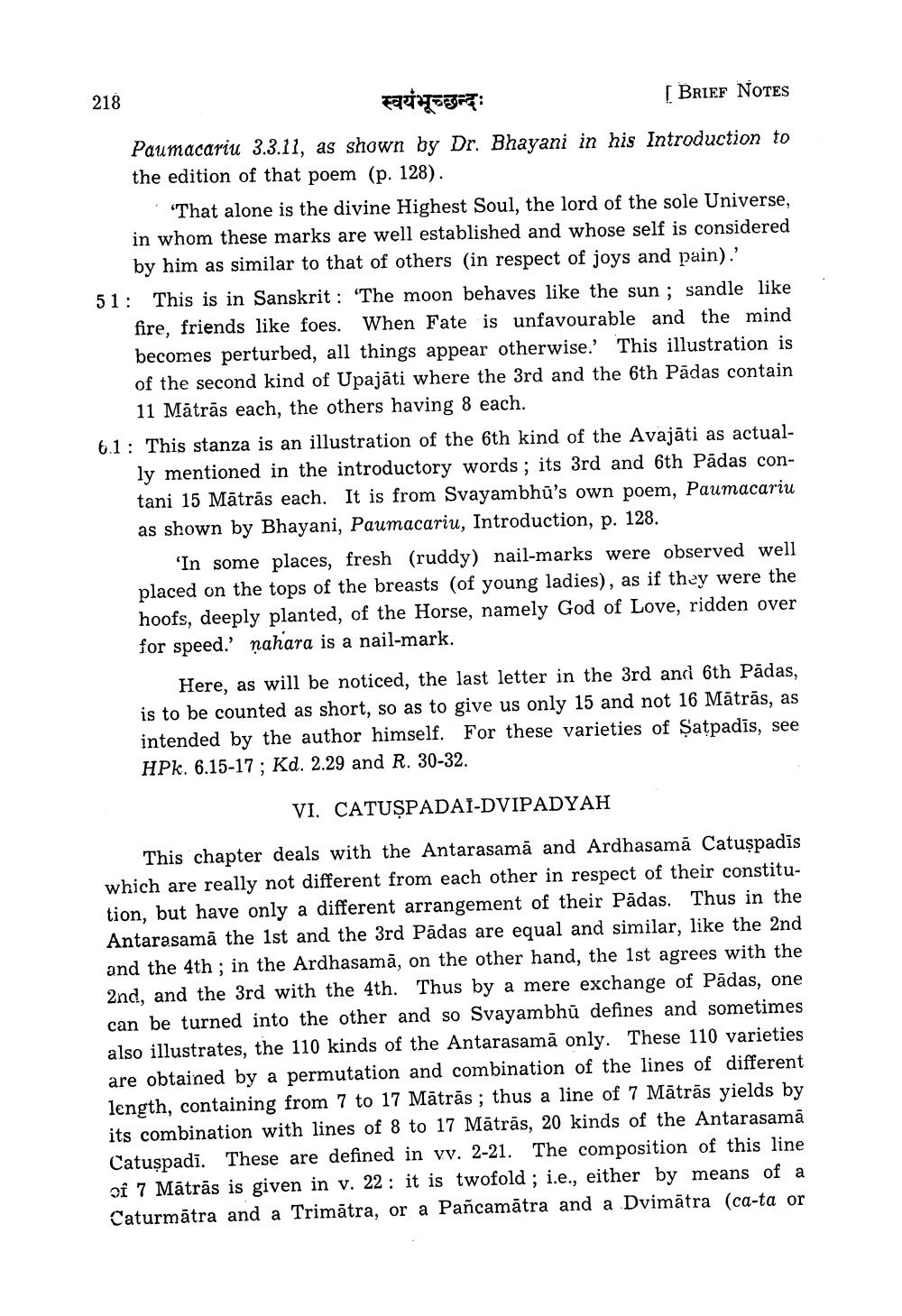________________
218
स्वयंभूच्छन्दः
[BRIEF NOTES
Paumacariu 3.3.11, as shown by Dr. Bhayani in his Introduction to the edition of that poem (p. 128).
''That alone is the divine Highest Soul, the lord of the sole Universe, in whom these marks are well established and whose self is considered
by him as similar to that of others (in respect of joys and pain).' 51: This is in Sanskrit: "The moon behaves like the sun ; sandle like
fire, friends like foes. When Fate is unfavourable and the mind becomes perturbed, all things appear otherwise. This illustration is of the second kind of Upajāti where the 3rd and the 6th Padas contain
11 Mātrās each, the others having 8 each. 6.1: This stanza is an illustration of the 6th kind of the Avajāti as actual
ly mentioned in the introductory words; its 3rd and 6th Pādas contani 15 Mātrās each. It is from Svayambhu's own poem, Paumacariu as shown by Bhayani, Paumacariu, Introduction, p. 128.
'In some places, fresh (ruddy) nail-marks were observed well placed on the tops of the breasts (of young ladies), as if they were the hoofs, deeply planted, of the Horse, namely God of Love, ridden over for speed.' nahara is a nail-mark.
Here, as will be noticed, the last letter in the 3rd and 6th Pädas, is to be counted as short, so as to give us only 15 and not 16 Mātrās, as intended by the author himself. For these varieties of Satpadīs, see HPk. 6.15-17; Kd. 2.29 and R. 30-32.
VI. CATUȘPADAI-DVIPADYAH
This chapter deals with the Antarasamā and Ardhasamă Catuspadis which are really not different from each other in respect of their constitution, but have only a different arrangement of their Pādas. Thus in the Antarasamā the 1st and the 3rd Pādas are equal and similar, like the 2nd and the 4th ; in the Ardhasamā, on the other hand, the 1st agrees with the 2nd, and the 3rd with the 4th. Thus by a mere exchange of Pādas, one can be turned into the other and so Svayambhū defines and sometimes also illustrates, the 110 kinds of the Antarasamā only. These 110 varieties are obtained by a permutation and combination of the lines of different length, containing from 7 to 17 Mātrās ; thus a line of 7 Mātrās yields by its combination with lines of 8 to 17 Mātrās, 20 kinds of the Antarasamā Catuspadi. These are defined in vv. 2-21. The composition of this line of 7 Mātrās is given in v. 22: it is twofold ; i.e., either by means of a Caturmätra and a Trimātra, or a Pañcamātra and a Dvimātra (ca-ta or




